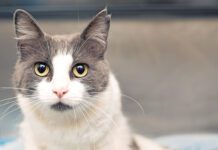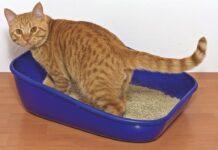What started out as a neighbors lament to Henry Lowe – who sold industrial absorbents at the time – has burgeoned into a $700 million industry in the United States alone. The story on kitty litter has added several chapters since the product first hit the market in 1948. Back then, the substance was just a bag of absorbent clay balls.
Today, we choose from a litany of types: Theres clumping and non-clumping; flushable and non-flushable; clay-based, pine or recycled newspapers. We even have environmentally friendly biodegradables. One thing is certain: The choices are better, and more complicated, than those that were available to the cat owner in 1948.
So exactly what is taking up shelf space in the kitty litter aisle these days? And why would someone choose one brand over the other? Despite many advances, some things have not changed – and that is the desire for an absorbent product that will reduce odors. The tracking factor, dust level and health concerns are also important considerations in the purchasing decision.
Clumping vs. Non-Clumping
There is some controversy surrounding clumping litters since there have been reports claiming that cats ingest the clumping substance while grooming themselves – and then suffer the effects when it swells in their intestinal tract. There is no scientific data to back this claim, however, so this is something you might want to discuss with your cats veterinarian. Obviously, any sign of ill health in your cat should warrant a trip to the veterinarian.
Clumping litters are designed to clump together around moisture to allow for the removal of only the soiled litter. This reduces the frequency with which the litter must be completely replaced and can be a cost-effective choice. Most of the brands offer a clumping version of their regular litters. Clumping litters pose more of a problem with tracking than do other varieties, however, and should not be flushed.
Its also wise to change the contents of the box completely once a week or so – starting from fresh – if you have a multi-cat home or a cat that prefers a particularly clean box.
Non-clumping litter is more like gravel and therefore tracking is less of a problem; however, when cleaning the box, the entire contents must be removed and new litter used to fill the box. It tends to be a bit dustier when first poured, so you should avoid inhaling the substance. The same goes for a curious kitty.
Non-Clay Litters
The base of these litters is a substance other than the usual clay. Included in this category are those litters made from pine pellets, wheat, corn and recycled paper.

288
Pine litters: Feline Pine and ExquisiCat Pine Litter are two brands that offer a natural pine, chemical-free base. Both are biodegradable and flushable. Pine litter is relatively dust-free and creates little tracking. Another plus is that the pine scent is a natural and pleasant odor reducer.
Grain litters: Swheat Scoop Cat Litter is a wheat-based product. It is an unscented scooping litter that is biodegradable and flushable. Wheat enzymes are natural odor absorbers.
Worlds Best Cat Litter is made from whole kernel corn. It is a fragrance-free litter that naturally controls odor; it is biodegradable and the manufacturer states that it is flushable even for septic systems. Vetbasis is another corn-based litter, with an added lavender fragrance. The manufacturer states that it is flushable even for septic systems.
Recycled paper litters: Cell-Sorb Plus Bedding & Litter and Yesterdays News are two litters made from recycled papers. Cell-Sorb Plus boasts excellent odor control because of added natural gypsum. Both are biodegradable and can be flushed.
Crystals, Silica Gel and Pearls
EverClean Crystals, ExquisiCat Crystals, Arm & Hammer Crystal Blend and Tidy Cat Crystals are just a few of the brands now offering the crystal solution to litter woes.
The crystals – or silica gel – quickly absorb the moisture and trap the odor. Many of the manufacturers say that the clumping crystals can be scooped daily and require replacement an average of every thirty days. Crystal-type litters are reportedly 99 percent dust-free, which cuts down on tracking.
Harvest Ventures Tracks-Less Litter Pearls Cat Litter is especially designed with tracking in mind. There is no tracking with the pearls, but some may bounce out of the box. The pearls are designed to absorb moisture and trap the odors inside. According to the manufacturer, Pearls does not clump or require daily scooping and needs to be changed only once a month.
Special Needs Litter
These litters fall into the most innovative category. Among the litters available for special needs are Dr. Elseys Cat Attract Cat Litter, which uses an herbal-blend scent claimed by the manufacturer to attract cats to the litter box. It is a scoopable, dust-free litter used for litter training or to retrain a cat that starts soiling in the wrong places.
Health Alert Blood Detection Granules can be used as litter to detect blood in the urine. The manufacturer states that the product is 100 percent reliable.
We can see that litter has become a fascinating human- and feline-driven industry. Before litter, cats – like dogs – were relegated to the great outdoors. As litter grew in popularity, so too did feline companionship – and today, more homes are shared with cats than with dogs. And as felines became the number-one household companion, the choices in litter expanded to accommodate the ever-more varied needs and desires of both homeowners – the human and the cat.



